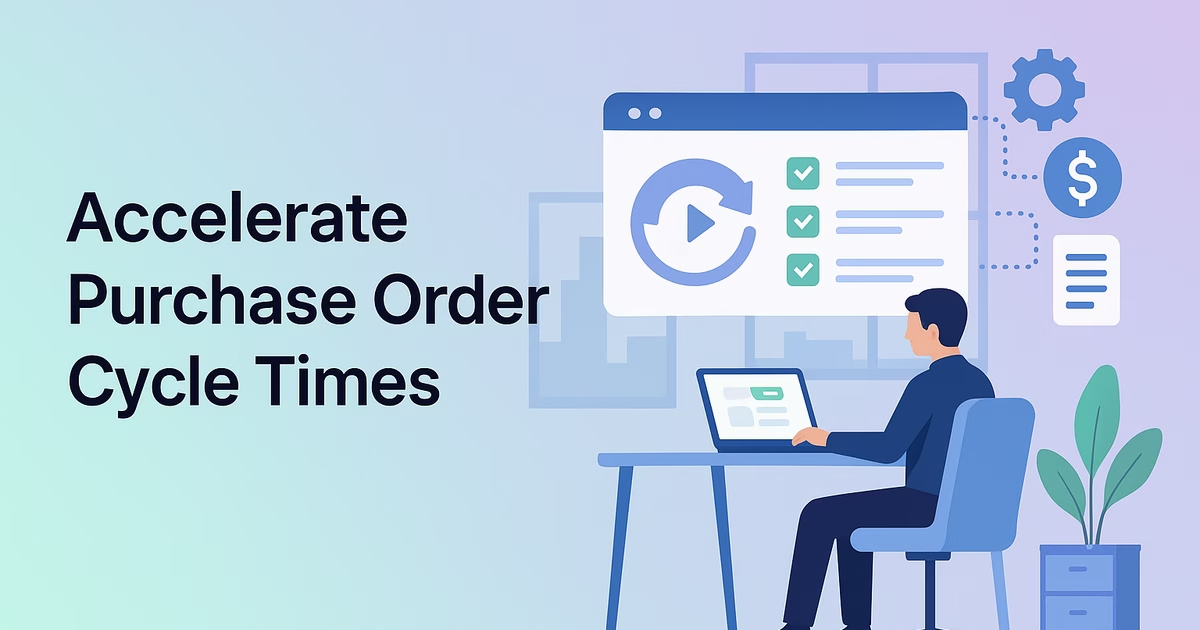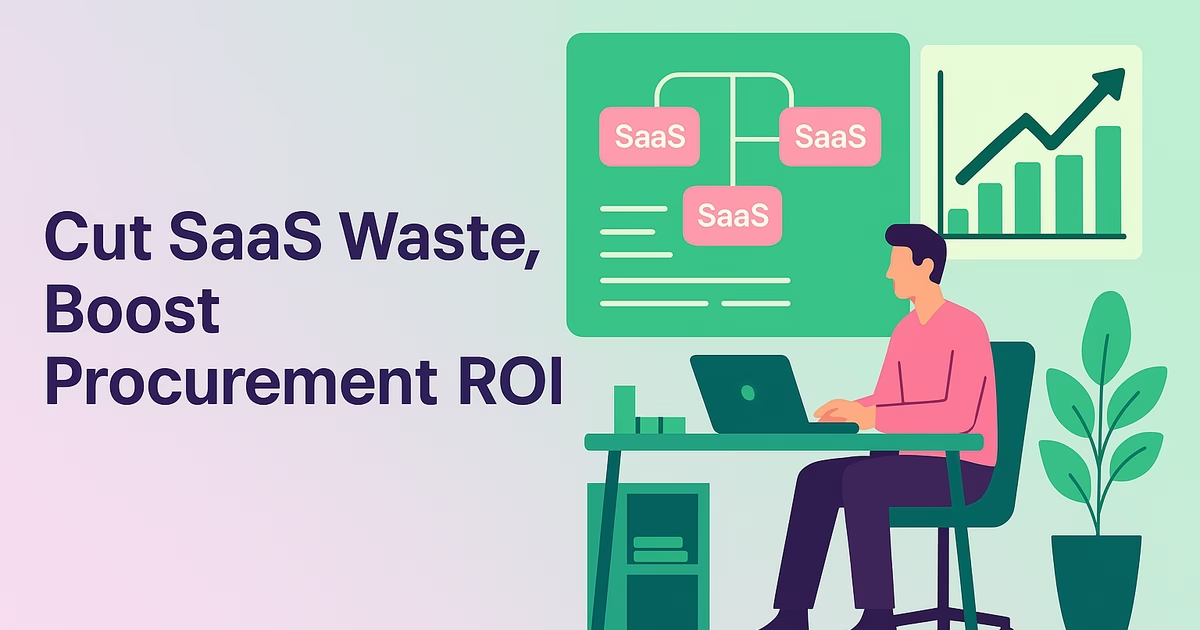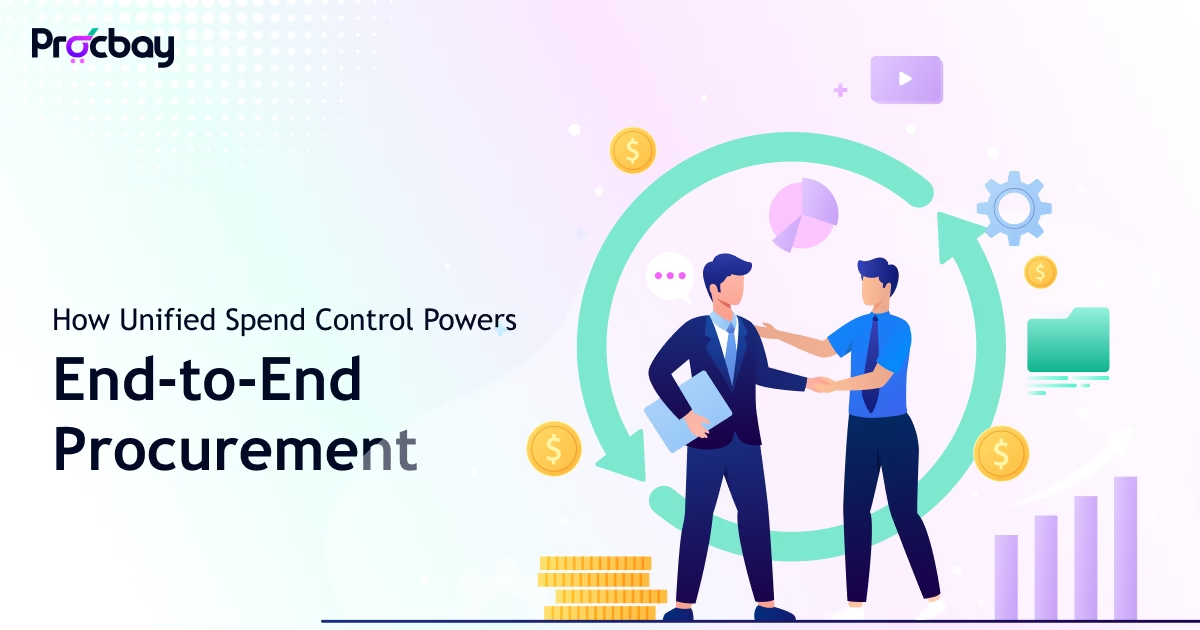Late approvals, surprise invoices, and spreadsheet chaos drain millions in value every quarter, yet the board still expects year-over-year savings. Imagine routing every request through an SLA-based workflow that flags budget risks before they happen and gives Finance real-time clarity on cash commitments. Teams that attain high spend visibility capture 62% more negotiated savings than their peers (Deloitte, 2023), proving that the promise is real. In the next few minutes, you’ll see exactly how to boost spend under management, which levers deliver the fastest payback, and why leading CFOs, CIOs, and CPOs are making this their top procurement priority.
Why Spend Under Management Still Eludes Enterprises
Even mature organizations typically control only 55–65 % of addressable spend through formal channels (Hackett Group, 2022). The rest slips away as maverick spend, shadow IT purchases, and “just-in-time” contracts that bypass negotiated terms. Three root causes keep reappearing:
- Fragmented intake-to-pay processes — Stakeholders raise requests in email or chat; Procurement is looped in late, so budgets are already committed.
- Manual reconciliation — AP struggles to match invoices, POs, and receipts. Discrepancies hide in inboxes, killing the three-way match and eroding audit trails.
- Isolated data — ERP, T&E, P-card, and supplier portals don’t talk to each other, blocking a single view of spend that management procurement teams crave.
Until these gaps are closed, every cost-reduction initiative feels like an uphill climb.
The Business Case: From Cost Center to Value Engine
For the C-suite, spend under management is more than a procurement metric; it is a proxy for organizational agility and risk posture. Elevated control drives:
- Hard savings: Higher contract compliance leads directly to lower unit prices and volume rebates.
- Working-capital gains: Predictable cash-out timing lets Treasury optimize payment terms without jeopardizing supplier relationships.
- Risk mitigation: A complete audit trail supports ESG, cybersecurity, and regulatory disclosures, protecting brand equity.
When Finance can forecast commitments accurately, and CIOs see every software contract in one dashboard, Procurement graduates from “PO pushers” to strategic advisors.
Five Levers to Increase Spend Under Management
Below is a practical, ordered game plan tested in global enterprises. Each step builds on the last; skip the order and friction returns.
- Centralize Intake
Consolidate all purchase requests—goods, services, SaaS—into a single gateway integrated with your collaboration tools. A friendly intake form captures cost center, category, and business justification up front, eliminating late-stage surprises. - Codify Policy with SLA-Based Workflows
Embed procurement budget control thresholds directly into routing rules. Auto-escalate high-risk items to Legal or InfoSec, while low-value, low-risk requests pass through a “guided buying” catalog in minutes. - Automate the Three-Way Match
Link POs, goods receipts, and invoices inside one platform. Exceptions trigger alerts, not frantic email threads. AP can now process invoices 50 % faster (Hackett Group, 2022). - Enrich Data for 360° Spend Visibility
Harmonize supplier, contract, and GL data in a normalized taxonomy. Dashboards should surface real-time tracking of contract compliance, maverick spend, and upcoming renewals. - Continuously Monitor and Optimize
Track KPIs monthly—percentage of addressable spend captured, cycle time, savings realized. Use insights to tweak catalogs, renegotiate contracts, and retrain requestors.
Simplify Procurement. Accelerate Growth.
Procbay’s AI streamlines requests, approvals, and vendors, so you save time and scale faster.
Follow these steps, and maverick spend transforms from a budget leak to a managed opportunity.
Enablers: Data, Process, Technology
A strategy is only as strong as its enablers. Let’s break them down.
Data Governance
- Common taxonomy across categories enables apples-to-apples analysis.
- Supplier master synchronization prevents duplicate vendor IDs that distort volumes.
- Audit trails create defensible proof of compliance for auditors.
Process Excellence
- Intake standardization removes ambiguity, ensuring Procurement is involved at the right moment.
- SLA metrics (e.g., “24-hour approval window”) keep stakeholders aligned on expectations.
- Continuous improvement loops capture feedback and iterate on policies.
Technology Platforms
- Procurement spend visibility software platforms aggregate data from ERP, contract, and AP systems.
- AI-driven classification tags line-level data instantly, surfacing hidden patterns.
- Open APIs integrate with existing finance stacks—no rip-and-replace required.
A balanced investment across these pillars fast-tracks value realization.
How Procbay Extends Your Reach
Procbay is purpose-built to turn complexity into clarity. Two differentiators stand out:
- Context-aware intake-to-pay — The platform embeds policy logic at the request stage, preventing maverick spend instead of merely reporting it. Users see real-time budget impact before hitting “submit,” shrinking rogue buys by up to 30 % in live deployments.
- Unified data fabric — Procbay’s integration layer syncs with ERP, HRIS, and collaboration suites, delivering a single source of truth without forcing mass data migrations.
Result: approvals complete 5× faster and Finance gains instant confidence in forecast accuracy, all with the team you already have.
KPI Dashboard: What Good Looks Like
Before launching any initiative, baseline where you are. The table below shows target ranges for enterprises above $1B in annual spend.
| KPI | Baseline (Typical) | Best-in-Class Target | Why It Matters |
| % Spend Under Management | 55–65 % | 85 %+ | Direct correlation to realized savings |
| Average Requisition-to-PO Cycle Time | 10–12 days | <2 days | Improves stakeholder satisfaction |
| Maverick Spend % | 15 % | <5 % | Reduces compliance risk and lost discounts |
| Invoice Touchless Rate | 25 % | 70 % | Freed AP staff for strategic work |
Pro Tip: Review each metric with both Procurement and Finance leaders monthly. Shared accountability accelerates progress.
Neutral Deep-Dive: Strategies for Controlling Procurement Spend
Without naming any specific platform, the following tactics consistently move the needle:
- Guided catalogs keep requestors inside pre-negotiated frameworks.
- Dynamic discounting ties early-payment offers to real-time cash positions.
- Supplier collaboration portals improve forecast accuracy, reducing rush fees.
- Contract lifecycle integration ensures renewals trigger sourcing events, not auto-renewals.
- Predictive analytics flags unusual volume spikes before PO issuance.
Adopting even two of these strategies for controlling procurement spend can unlock quick wins while broader transformation unfolds.
Change Management: Bringing Stakeholders Along
Resistance often stems from fear of extra clicks or perceived loss of autonomy. Address it head-on:
- Position as Enablement, Not Policing
Explain how spending under management makes budgeting easier for business units, not harder. - Show Quick Wins
Demonstrate a pilot category where approvals drop from days to hours. - Provide Training at Point-of-Use
Embedded tips inside the platform beat long manuals every time. - Celebrate Compliance
Publish leaderboards that highlight departments achieving 95 % contract compliance.
These human factors determine whether your shiny new dashboard becomes shelfware or a board-level success story.
Frequently Asked Questions
What spending categories should we prioritize first?
Start with high-volume, repetitive purchases (e.g., IT subscriptions, MRO supplies). Quick wins here build credibility for broader rollouts.
How long does it take to improve spending under management?
Most enterprises see measurable gains within one fiscal quarter after centralizing intake and automating approval workflows.
Do we need to replace our ERP?
No. Modern procurement spend visibility software platforms integrate via APIs, allowing you to leverage existing ERP investments while adding visibility and control layers on top.
Next Steps
You already know the problem; now you have the roadmap. Schedule a 30-minute strategic assessment with Procbay to benchmark your current spend under management, model potential savings, and outline an implementation sprint that fits your resource constraints.
Spend under management is the lever that turns Procurement from a cost cop to a strategic value creator. With centralized intake, automated three-way match, and real-time dashboards, you’ll finally gain the spend visibility needed to control budgets with confidence. Let’s move the conversation from frustration to control, book your assessment today.


